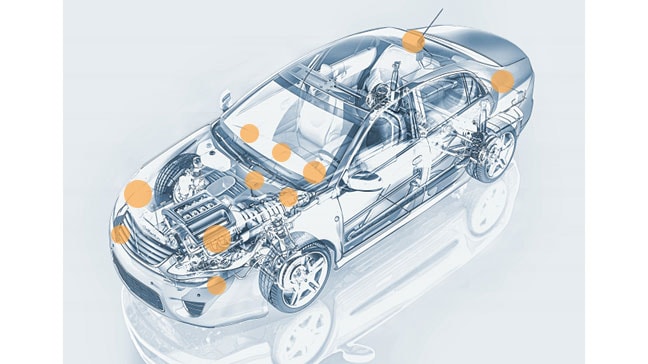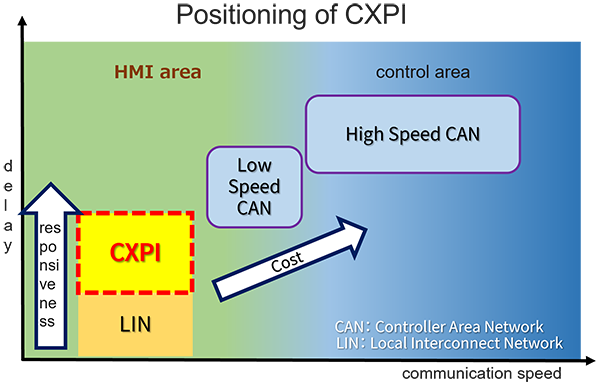-
My ToshibaSemicon
- 반도체 탑
-
애플리케이션Automotive
Body Electronics
xEV
In-Vehicle Infotainment
Advanced Driver-Assistance Systems (ADAS)
Chassis
IndustrialInfrastructure
BEMS/HEMS
Factory Automation
Commercial Equipment
Consumer/PersonalIoT Equipment
Healthcare
Wearable Device
Mobile
Computer Peripherals
-
제품자동차 디바이스
Discrete Semiconductor
다이오드
트랜지스터
로직 IC
Analog Devices
Digital Devices
Wireless Devices
※
: Products list (parametric search)
파워반도체※
: Products list (parametric search)
Isolators/Solid State RelaysPhotocouplers
Digital Isolators
Solid State Relays
Fiber Optic Transmitting Modules
※
: Products list (parametric search)
MOSFETsIGBTs/IEGTs바이폴라 트랜지스터※
: Products list (parametric search)
다이오드※
: Products list (parametric search)
마이크로컨트롤러모터 드라이버 ICIntelligent Power ICs※
: Products list (parametric search)
전원관리IC리니어 IC※
: Products list (parametric search)
범용로직IC리니어 이미지 센서기타 제품용 IC기타 제품용 IC
※
: Products list (parametric search)
-
개발/설계 지원
-
기술 자료
- 구매처
- 부품 번호 & 키워드 검색
- 상호 참조 검색
- 파라미터 검색
- 재고 확인 및 구매
This webpage doesn't work with Internet Explorer. Please use the latest version of Google Chrome, Microsoft Edge, Mozilla Firefox or Safari.
3글자 이상 입력하세요. Search for multiple part numbers fromhere.
The information presented in this cross reference is based on TOSHIBA's selection criteria and should be treated as a suggestion only. Please carefully review the latest versions of all relevant information on the TOSHIBA products, including without limitation data sheets and validate all operating parameters of the TOSHIBA products to ensure that the suggested TOSHIBA products are truly compatible with your design and application.Please note that this cross reference is based on TOSHIBA's estimate of compatibility with other manufacturers' products, based on other manufacturers' published data, at the time the data was collected.TOSHIBA is not responsible for any incorrect or incomplete information. Information is subject to change at any time without notice.
3글자 이상 입력하세요.
Automotive Network Communication
The platform configuration of automotive network communication has been changing because motor vehicles are rapidly becoming electrified and digitalized. Toshiba offers automotive network communication devices that meet the needs of the times. The automotive communication protocol standard CXPI has a high-speed response suitable for networks of automotive body system applications such as steering switches, light switches etc. or interfaces of zone ECUs. Moreover, its multiplex communication brings about reduction of the number of wiring harnesses, helping to reduce vehicle body weight.

What is CXPI?
CXPI(Clock Extension Peripheral Interface) is an international standard (ISO 20794) for automotive communication protocols.
This standard which provides a multiplex communication method was established for next-generation automotive sub-networks to bring about reduction of the number of wiring harnesses of HMI(Human Machine Interface) devices, helping to reduce vehicle body.
CXPI is superior to LIN in terms of two-way communication between a commander and responders, large-capacity data transfer, and high-speed response.
Application examples
- Steering switches
- Combination switches
- Light switches
- Door latch, Door mirror
- Power seat, Seat heater
- Body system applications

Positioning and benefits of CXPI

LIN communication has been widely used in conventional automotive body applications. However, LIN communication uses periodic transmissions and responses from the commander node to the responder nodes, making it difficult to apply to applications such as switches that require responsiveness. However, CXPI can be sent from either the commander node or the responder node.
Additionally, it is possible to efficiently send and receive data from a variety of applications, since it is a protocol that can handle large amounts of data at once compared to LIN.

Lineup
| Product number | Package | Functions | Applications | Features | Current consumption in sleep mode | Maximum communication speed | Power supply | Reliability test level |
|---|---|---|---|---|---|---|---|---|
| P-SOP8-0405-1.27-002 | Physical layer interface conforming to CXPI, an automotive communication protocol standard | CXPI physical layer interface for the following applications (Driver Receiver)
|
|
5μA(Typ.) | 20kbps | BATT | To be AEC-Q100 qualified | |
| P-VQFN28-0606-0.65-003 | CXPI compliant H/W logic interface IC (for responder node only) |
|
|
10μA(Typ.) | 20kbps | BATT | To be AEC-Q100 qualified |
* TB9032FNG has passed the CXPI physical layer test (ISO 20794-7 [8 Physical layer conformance test plan (PMA – PS separate type)]) conducted by a third party*1).
*1) Advanced Data Controls Corp.
Technical topics
Queries about purchasing, sampling and IC reliability
재고 확인 및 구매
3글자 이상 입력하세요.
Through this website you are able to proceed to the website of our distributors ("Third Party Website") which is not under the control of Toshiba Corporation and its subsidiaries and affiliates (collectively "Toshiba"). The Third Party Website is made available to you as a convenience only and you agree to use the Third Party Website at your own risk. The link of the Third Party Website does not necessarily imply a recommendation or an endorsement by Toshiba of the Third Party Website. Please be aware that Toshiba is not responsible for any transaction done through the Third Party Website, and such transactions shall be subject to terms and conditions which may be provided in the Third Party Website.

